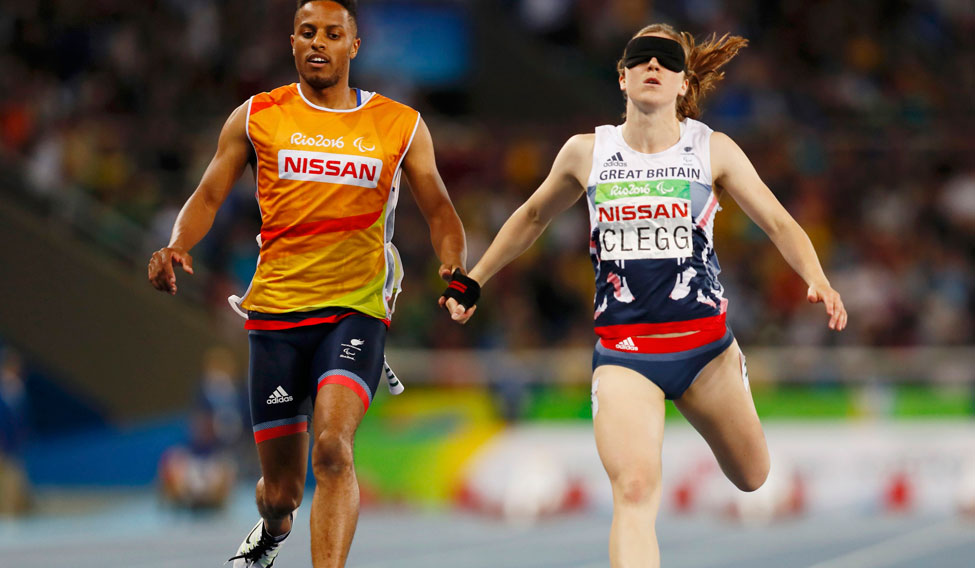Two months before the Paralympic Games in Rio, visually impaired British athlete Libby Clegg's vision started deteriorating. Consequently, she was reclassified from category T12 to T11—the category for the most visually impaired—which meant she had to run the race blindfolded. She defeated the odds to win gold in the 200m event, but have you ever wondered how blind athletes compete at track and field events? How do they make their way around the track?
The credit goes to a bunch of people who serve as eyes of the athletes—sighted guides. Clegg put her trust on her guide Chris Clarke, who saw to it that she bagged the gold. These guides run along with the visually impaired athletes, matching them step for step, calling out for potential obstacles, guiding them through turns in the track and informing them about how much of the race is left. Guides and runners are bound at the wrist with a small piece of rope called the tether. This helps the runner stay aligned.
Being a guide is a challenging task. It requires the guide to keep pace with the athlete so that their arm and leg movements are in synchronisation. Guides, however, must not cross the line before the athlete. If so, the athlete will be disqualified. Having their wrists bound by a tether, which is non-elastic, makes the race all the more difficult. It feels more or less like a three-legged race, and it is up to the guide to ensure no injury happens. With verbal cues, a sighted guide not only takes the race forward, he also plays a crucial role in boosting the morale of the runner. Guides do not just turn up at the day of the race, they undergo rigorous training with the runner well in advance.
Sighted guides are an essential part of other Paralympic events like cycling, football and alpine skiing. In cycling, participants compete on a tandem bike with a sighted guide in the front. In football, a sighted guide guides players from behind the goalpost. In skiing, the guides have a crucial role to play in which they ski close to the visually impaired skier to guide through the course and alert them on slopes in the path. Sighted guides also find a place in blind golf where they help the player line up, describe the hole, help with club selection and positioning the player.
The runner and the guide are a team, it is a partnership. The struggle of a sighted guide is on par with that of the visually impaired athlete, and that deserves a podium moment. This is why sighted guides were made eligible for medals for the first time at London 2012. For most of the guides, however, it is not about the medals. It is about the greater gratification of having helped someone realise their dream.





